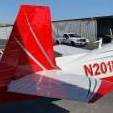RPM at rotation speed?
-
Members Online
- EricJ
- mmcdaniel33
- CaptainRamius
- Grumpy
- GeeBee
- GLJA
- 00-Negative
- Schllc
- 201er
- Culver LFA
- oceanviews
- Danb
- ArtVandelay
- AV8RGUY
- pirate
- theanswriz42
- hammdo
- Texas Mooney
- bcg
- Paradigm
- theoriginalturk
- Lois
- lanejacobs84
- da3b242
- tim417
- jrwilson
- 47U
- jtoland
- Littleman749667
- Markku
- N201MKTurbo
- NickG
- vik
- TheAv8r
- Jerry Brown
- bhtitle
- Lax291


Recommended Posts
Join the conversation
You can post now and register later. If you have an account, sign in now to post with your account.